
The corn snake, sometimes called red rat snake is a species of North American rat snake in the family Colubridae. The species subdues its small prey by constriction. It is found throughout the southeastern and central United States. Though superficially resembling the venomous copperhead and often killed as a result of this mistaken identity, the corn snake lacks functional venom and is harmless. The corn snake is beneficial to humans because it helps to control populations of wild rodent pests that damage crops and spread disease.

The hermit thrush is a medium-sized North American thrush.

Opahs, also commonly known as moonfish, sunfish, cowfish , kingfish, and redfin ocean pan are large, colorful, deep-bodied pelagic lampriform fishes comprising the small family Lampridae.
Indo-Pacific king mackerel, also known as the spotted seer fish or spotted Spanish mackerel, is a sea fish among the mackerel variety of fishes. It is found in around the Indian Ocean and adjoining seas. It is a popular game fish, growing up to 45 kg (99 lb), and is a strong fighter that has on occasion been seen to leap out of the water when hooked.
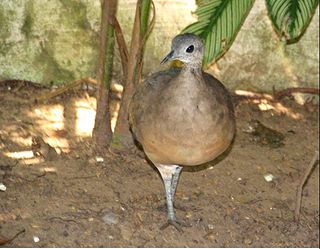
The white-throated tinamou is a species of bird native to the Amazon rainforest of Brazil, northern Bolivia, southeastern Colombia, northeastern Ecuador, eastern Peru and southern Venezuela.

Erythranthe guttata, with the common names seep monkeyflower and common yellow monkeyflower, is a yellow bee-pollinated annual or perennial plant. It was formerly known as Mimulus guttatus.
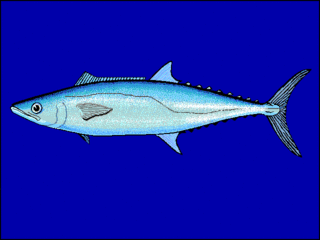
Scomberomorus is a genus of ray-finned bony fish in the mackerel family, Scombridae. More specifically, it is a member of the tribe Scomberomorini, commonly known as the Spanish mackerels.

The smooth-sided toad or spotted toad, formerly known as Bufo guttatus, is a species of toad in the family Bufonidae. It is found in the Amazonian Bolivia, Brazil, Colombia, Ecuador, Peru, and Venezuela, as well as the Guianas. Specimens from southern Peru, Bolivia, and Brazil might represent Rhaebo ecuadorensis described in 2012.

The spotted greenbul or spotted bulbul, is a species of songbird in the bulbul family, Pycnonotidae. It is classified in the monotypic genus Ixonotus. It is widely spread throughout the African tropical rainforest, from Sierra Leone and Guinea to Ghana; southern Nigeria to Uganda, northern Tanzania, eastern and central Democratic Republic of the Congo and extreme north-western Angola. Its natural habitats are subtropical or tropical dry forest, subtropical or tropical moist lowland forest, and moist savanna.
The dwarf flat lizard or lesser flat lizard is a lizard in the family Cordylidae. It is found in Southern Africa.

Acanthurus guttatus, the whitespotted surgeonfish, spotted surgeonfish, mustard surgeonfish, mustard tang or spotband surgeonfish, is a species of marine ray-finned fish belonging to the family Acanthuridae, the surgeonfishes, unicornfishes or tangs. It is found in shallow waters on reefs in the Indo-Pacific.
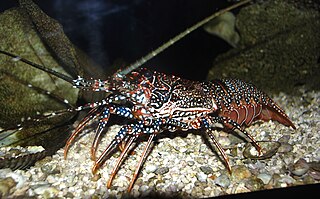
Panulirus guttatus, the spotted spiny lobster or Guinea chick lobster, is a species of spiny lobster that lives on shallow rocky reefs in the tropical West Atlantic and Caribbean Sea.

The red hind, also known as the koon or lucky grouper in Caribbean vernacular, is a species of marine ray-finned fish, a grouper from the subfamily Epinephelinae which is part of the family Serranidae, which also includes the anthias and sea basses. It is native to the western Atlantic Ocean where it ranges from the eastern United States to Brazil. It is the most common species of Epinephelus in the Caribbean.
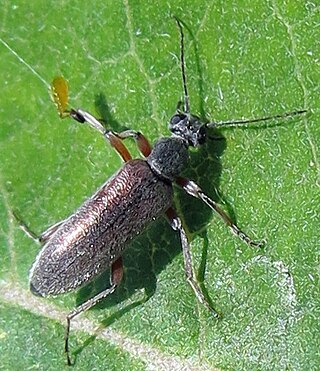
Stereopalpus is a genus of antlike flower beetles in the family Anthicidae. There are about 11 described species in Stereopalpus.

Sylvicola is a genus of wood gnats in the family Anisopodidae. There are more than 80 described species in Sylvicola.
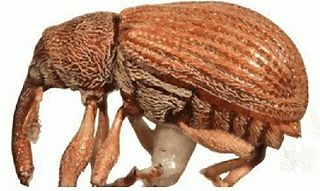
Pseudanthonomus is a genus of true weevils in the beetle family Curculionidae. There are more than 60 described species in Pseudanthonomus.
Acanthoscelidius is a genus of minute seed weevils in the beetle family Curculionidae. There are about 14 described species in Acanthoscelidius.
Acanthoscelidius guttatus is a species of minute seed weevil in the family of beetles known as Curculionidae. It is found in North America.
Monoedus is a genus of cylindrical bark beetles in the family Zopheridae. There are about eight described species in Monoedus.

Limnogonus is a genus of water striders in the family Gerridae. There are 28 described species in Limnogonus. Similar to other gerromorphan bugs, most species of Limnogonus have both macropterous wing morphs, which means that they are often able to fly. The wings are thought to be an adaptation to help the insects get away from drought allowing them to fly to the next available area that has water bodies when the rainy season arrives.














